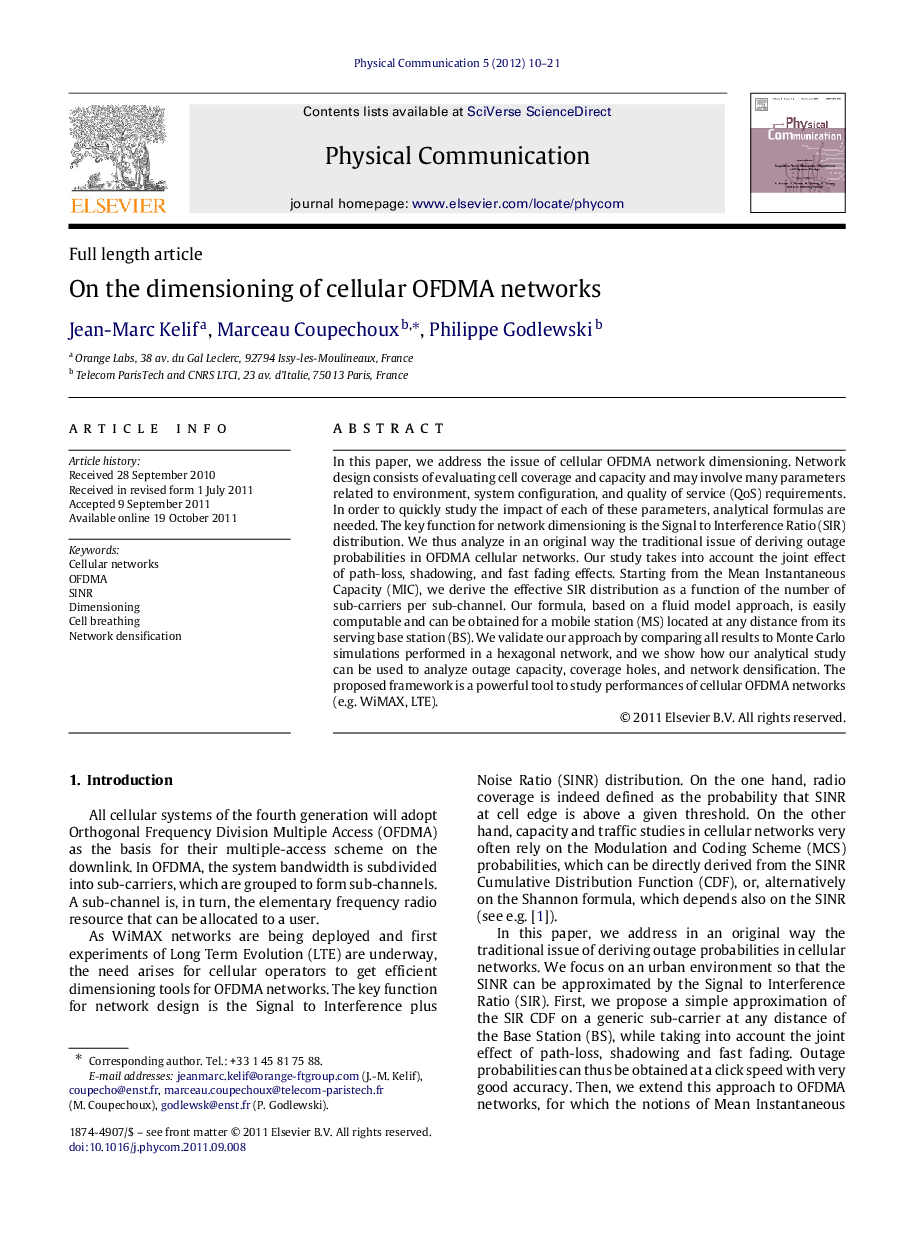| Article ID | Journal | Published Year | Pages | File Type |
|---|---|---|---|---|
| 466394 | Physical Communication | 2012 | 12 Pages |
In this paper, we address the issue of cellular OFDMA network dimensioning. Network design consists of evaluating cell coverage and capacity and may involve many parameters related to environment, system configuration, and quality of service (QoS) requirements. In order to quickly study the impact of each of these parameters, analytical formulas are needed. The key function for network dimensioning is the Signal to Interference Ratio (SIR) distribution. We thus analyze in an original way the traditional issue of deriving outage probabilities in OFDMA cellular networks. Our study takes into account the joint effect of path-loss, shadowing, and fast fading effects. Starting from the Mean Instantaneous Capacity (MIC), we derive the effective SIR distribution as a function of the number of sub-carriers per sub-channel. Our formula, based on a fluid model approach, is easily computable and can be obtained for a mobile station (MS) located at any distance from its serving base station (BS). We validate our approach by comparing all results to Monte Carlo simulations performed in a hexagonal network, and we show how our analytical study can be used to analyze outage capacity, coverage holes, and network densification. The proposed framework is a powerful tool to study performances of cellular OFDMA networks (e.g. WiMAX, LTE).
